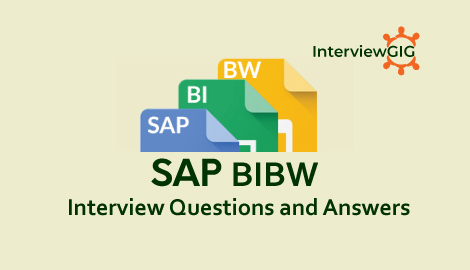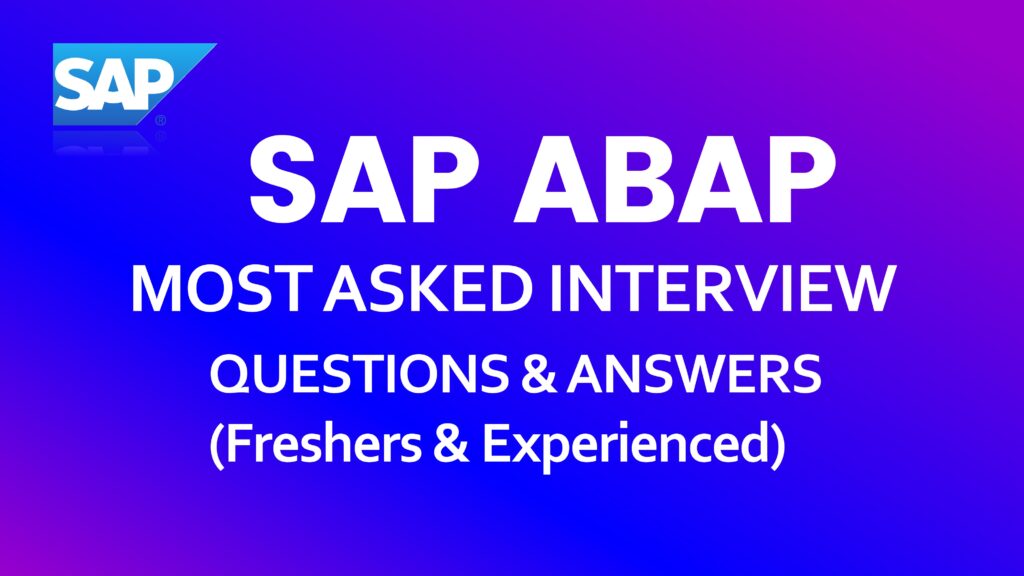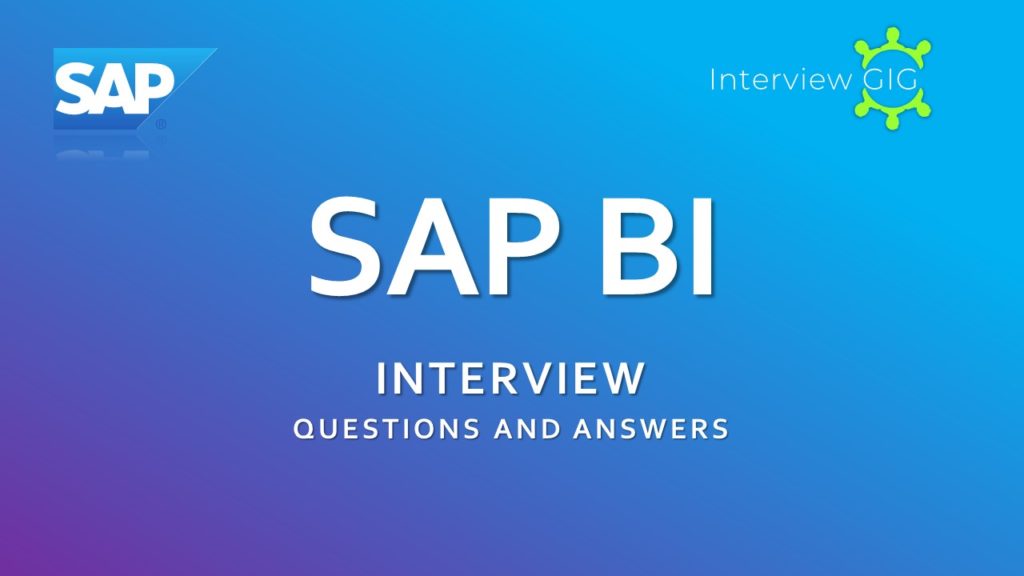Explain SAP Extended Warehouse Management EWM?
SAP EWM is used to efficiently manage inventory in Warehouse and for supporting processing of goods movement. It allows company to control their Warehouse inbound and outbound processes and movement of goods in Warehouse.
The main process in a Warehouse is incoming and outgoing materials, goods receipt and goods issue, fulfil customer orders, and distribution of goods. When a company doesn’t store any goods, then there is no need of Warehouse management to manage goods.
Inbound process involves storage of goods in warehouse and their location and Outbound process involves picking up the goods. Whenever a material is stored in a warehouse, it is stored in storage bin and you can find its current location.
What are the different deployment options in EWM?
SAP EWM can be considered as deployed in ERP server or you can also consider it as an application in Supply chain Management landscape.
EWM Deployment options −
- SAP EWM on SCM Server
- SAP EWM as Standalone
What are the different Organizational units in Warehouse Management?
- Warehouse Number
- Storage Type
- Storage Section
- Storage Bin
- Activity Areas
- Quant
What is Storage bin?
Storage bins represent the physical location of storage space where the products are stored in Warehouse. They are at lowest level of organization structure and when you store an item in a Warehouse you need to mention its exact location.
What is the use of Activity areas in Storage bin?
Storage bins are further categorized in activity area. It includes activities like picking, put away or a physical inventory. As per activity, you can assign same storage bin to multiple activity areas.
What is Quant?
The quantity of goods in storage bin is represented by Quant. The quant is used for managing inventory in storage bin.
What are the structure elements in a Warehouse management?
Warehouse consists of following elements in hierarchical structure −
- Warehouse Number
- Storage Type
- Storage Section
- Storage bin
- Activity Area
What is the highest unit and smallest unit in a Warehouse structure?
The highest unit in a Warehouse is Warehouse number and smallest unit is a storage bin.
What is a storage section? Provide examples of storage section?
This is part of storage type and represents a group of bins with same characteristics. Commonly used storage sections are fast moving or slow-moving items, etc.
What is Work Center in a Warehouse?
A work center in Warehouse is assigned to a storage type and a physical unit to perform packing, deconsolidation or weighing activities. Storage type assigned to work center has a role of work center, pick point or pick point and identification. You can also configure more than work center in a storage type.
Where do you use Work Centers in Warehouse processes?
Work center can be used for the following processes −
- Packing
- Deconsolidation
- Counting
- Quality check
What are different Warehouse process types in SAP EWM system?
There are different Warehouse process categories that are predefined in EWM system −
- Stock Removal
- Putaway
- Internal Movement
- Goods receipt posting
- Goods issue posting
- Physical inventory
- Cross Line put away
What are Value Added Services in Warehouse management?
Value Added Services define the product processing to be performed in a warehouse and includes activities like packing, labelling, assembling, etc.
What are the different components in a Value-Added Order?
A Value-added services order consists of the following components
- Order Header
- VAS activities to be performed
- Items
- Auxiliary products (Packing material, labels, oil, etc.)
Where do you manage Packaging specifications?
Go to SAP Easy access → EWM → Master Data → Packaging Specification → Maintain Packaging specification.
What do you understand by Stock Removal Strategy?
Stock removal strategy is method of determining storage bins for one or more products to be picked. You can customize stock removal rule definition table in customizing for SCM extended warehouse management.
What do you understand by Denial Scenario in Outbound Delivery system?
When an outbound delivery request is created, EWM system doesn’t create a warehouse task or task is created with a partial quantity, this is called Denial scenario.
When do you use Denial scenario in outbound delivery in EWM system?
When a warehouse task can’t meet the quantity requested in outbound delivery request, system can be configured to raise a pick denial.
In case of stock discrepancy picked by an employee, smaller quantity as per outbound delivery and no other stock is available in warehouse, you can set the system to execute a pick denial.
What is Storage Control?
Storage control is used to determine product movements in warehouse. It is used to execute put away or stock removal process in warehouse.
What are the different types of Storage Control?
Layout Oriented
Process Oriented
What is pick pack and pass of goods in EWM system?
This is used to manage picking, packing and transportation of goods in activity areas in warehouse. This can be used in RF environment commonly and process flow is same as for standard RF process. In pick, pack and pass goods are moved from activity area to activity area till it arrives at destination point in the system.
What is the difference between System Controlled and User Controlled Pick, pack and pass of goods?
You need a warehouse order creation rule that supports the top warehouse order creation for the pick, pack, and pass process. The creation categories for this are
System-driven − For the system-driven option, the sequence of the warehouse orders in the top warehouse order is determined according to the sort sequence of the assigned in the configuration settings for joining the activity areas.
User-driven − For the user-driven option, the sequence is manually determined during the execution, which means it can also be done by the material flow system (MFS).
What is Replenishment in SAP EWM?
Replenishment is defined as movement of goods from warehouse to shipment locations. In SAP EWM, you can use predefined techniques for replenishment of storage bins. There are different replenishment control fields defined at storage type level or storage bin level. The data for control fields can be entered manually in system or you can use slotting process to define these fields.
What are common Control fields in Replenishment?
Below are the common control fields for Replenishment −
- Minimum stocking quantity
- Maximum stocking quantity
- Replenishment quantity
What is Planned Replenishment and Order Replenishment?
Planned Replenishment: Planned replenishment can be performed either interactively or in the background. The system calculates the replenishment in accordance with the defined minimum quantity and maximum quantity. Replenishment control is triggered when the stock is less than the minimum quantity.
Order Related Replenishment: Order related replenishment is performed when stock figure is less than required quantity. The system rounds up the replenishment quantity to a multiple of minimum replenishment quantity. The maximum quantity can be exceeded and order related replenishment can be performed in back ground or interactively.
What is automatic and direct Replenishment?
Automatic Replenishment − The system starts automatic replenishment when a warehouse task is confirmed. Replenishment is calculated as per maximum and minimum activity.
Direct Replenishment − Direct Replenishment is started during a pick denial and is only possible for fixed bin scenario. The system calculates replenishment as per maximum and minimum quantity.
Direct replenishment is performed by picket and it assume zero storage bin quantity.
Why do you use Physical inventor in SAP EWM?
To perform financial accounting and tax regulations, you may need to perform accurate inventory to get the value of an inventory in warehouse. Physical inventory process deals with counting physical inventory of a warehouse and to get counting results.
Physical inventory can be used by management to count inventory so that product can be stocked or corrected.
What are the different type of Physical inventory?
There are two types of physical inventory that can be performed −
- Storage bin specific
- Product Specific
What are the different Physical inventory procedures supported in SAP system?
- Periodic
- Continuous
- Cycle Counting
What is an Ad-hoc Physical inventory?
Ad-hoc physical inventory is type of continuous physical inventory and It can be executed anytime during the fiscal year, an ad hoc physical inventory may become necessary.
What is Slotting process in EWM? What are different parameters used in Slotting?
Slotting is a process in EWM to define most suitable putaway parameters- storage type, section, etc. Slotting places the good in a warehouse in the manner that provides most optimal storage and picking of goods.
There are different parameters that are used in slotting process −
- Storage Requirement Data
- Product Data
- Packaging Data
- Demand Forecast
What is Direct and Indirect labor?
Direct Labor − This includes time to perform warehouse activities like picking, packing, put away, etc.
Indirect Labor − This includes extra activities to manage warehouse like Sweeping, cleaning, housekeeping etc.
What is Expected Good Receipts?
Expected good receipts are used to create inbound deliveries. You can also create goods receipt in EWM system without an inbound delivery.
What is Cross docking in SAP EWM system? Why do we use Cross docking?
Cross Docking allows you to reduce the costs of goods transportation in warehouse and shorten the time needed for delivery. Cross docking only creates one movement GR Zone to GI Zone and can only be used if stock for removal is not determined by First in first out.
What the different types are of cross docking?
There are different types of cross docking available in SAP system −
- Transportation cross docking
- Merchandise Distribution
- Push deployment
- Pick from goods receipt
- Opportunistic Cross docking
What is the use of RF framework in EWM system? What are the functions that can be performed using RF framework?
In SAP EWM, RF stands for radio frequency mobile data entry that allows real time communication between warehouse employees and EWM system.
RF framework supports both browser based and GUI devices to connect to SAP system. You can create screen templates and merge them to a so-called display profile. This display profile is assigned to the presentation device.
RF framework in SAP EWM system provides all warehouse functionalities
- Loading
- Unloading
- Deconsolidation
- Put away
- Picking
- Packing
- Replenishment
- Physical inventory





